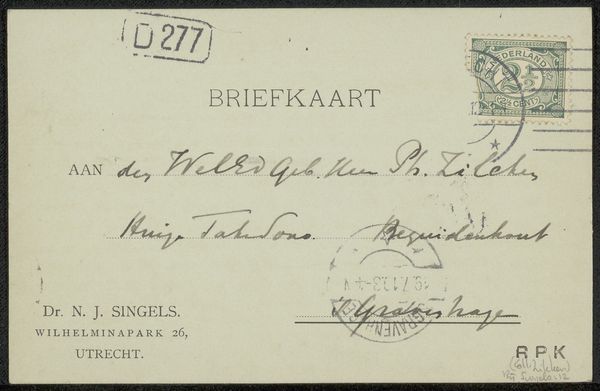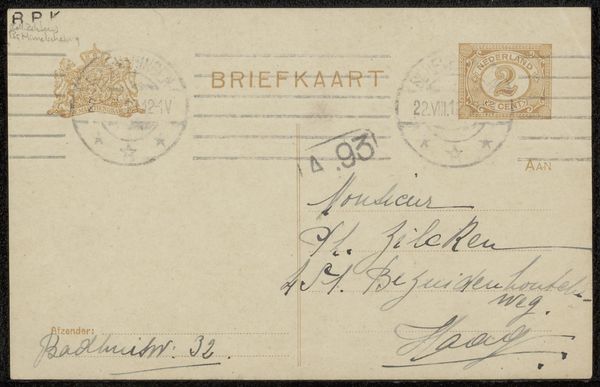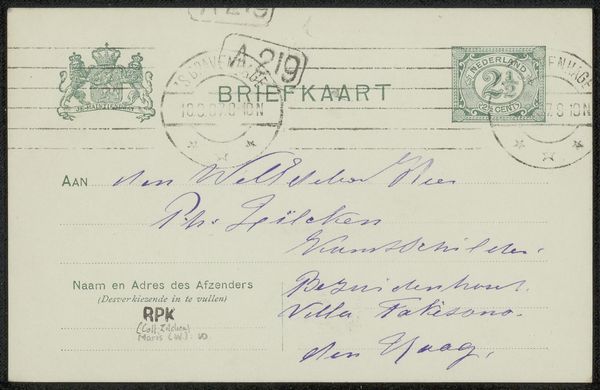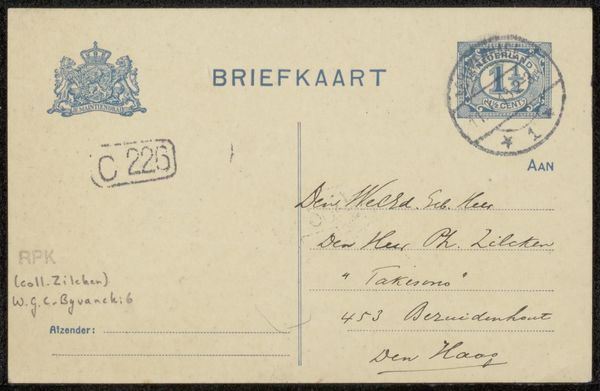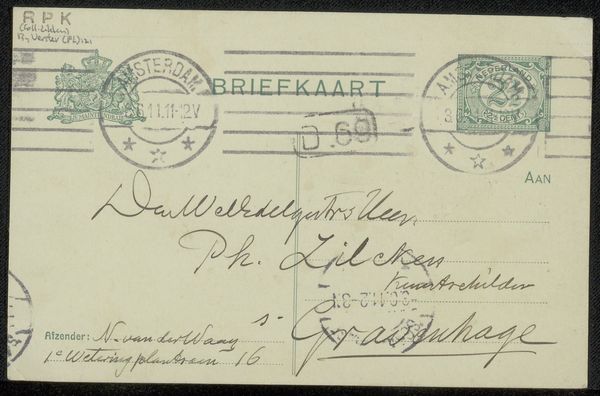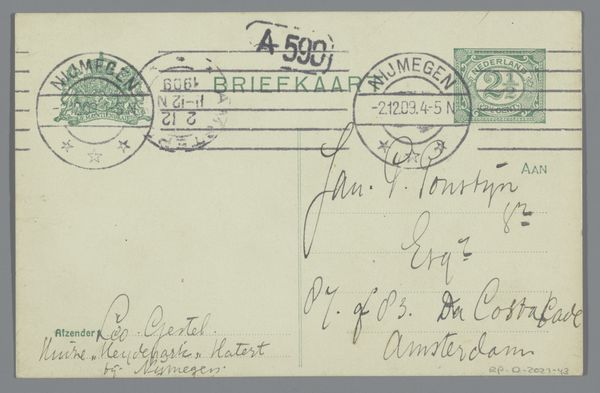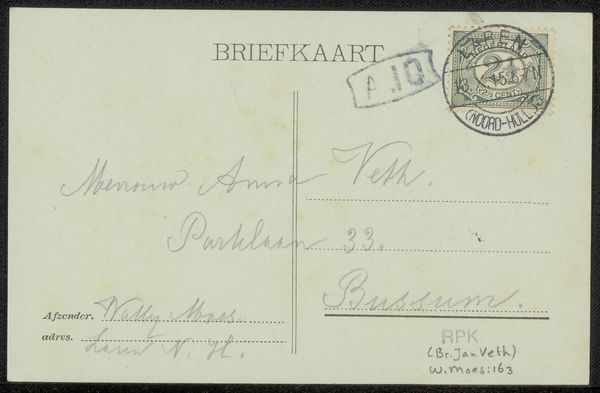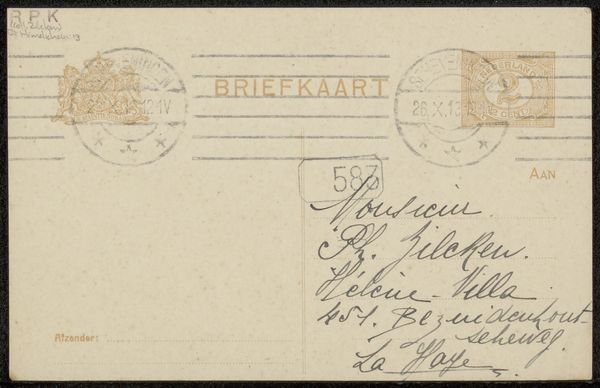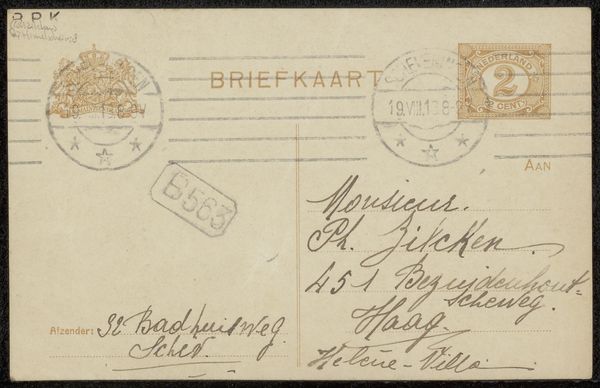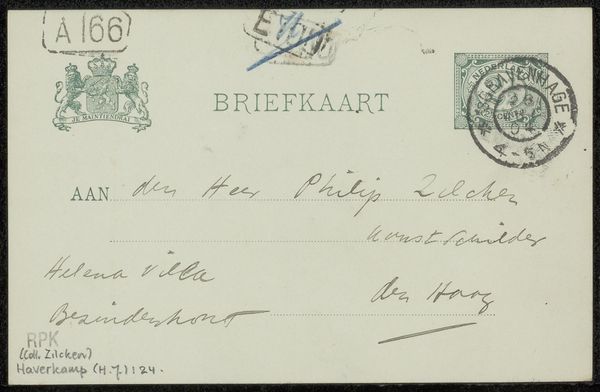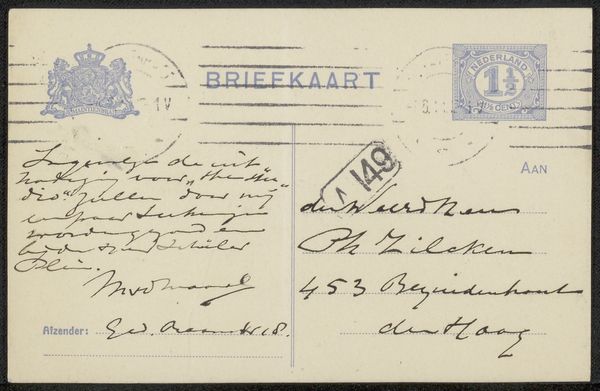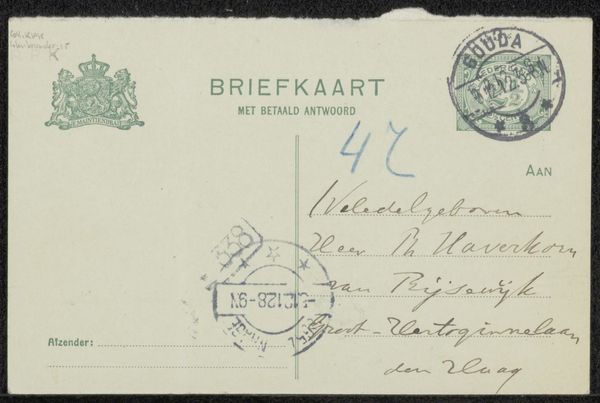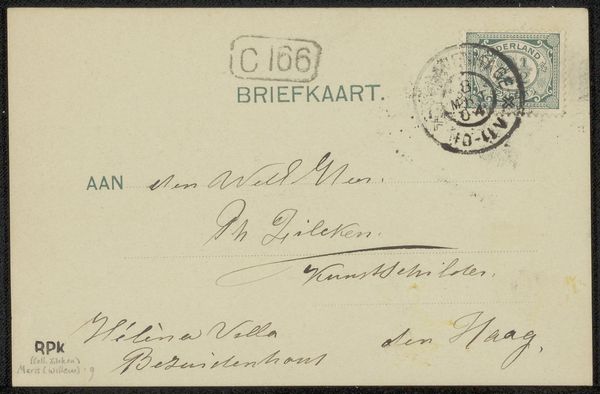
drawing, paper, ink, pen
#
portrait
#
drawing
#
aged paper
#
hand-lettering
#
hand drawn type
#
hand lettering
#
paper
#
personal sketchbook
#
ink
#
hand-drawn typeface
#
pen work
#
sketchbook drawing
#
pen
#
storyboard and sketchbook work
#
sketchbook art
#
calligraphy
Copyright: Rijks Museum: Open Domain
Editor: Here we have "Briefkaart aan Philip Zilcken," a pen and ink drawing on paper, created sometime between 1910 and 1921 by N.J. Singels. What strikes me is the contrast between the clean lines of the printed text and the fluid, almost hurried, script. What elements do you find most compelling? Curator: It is the interplay between order and gesture that initially captures my attention. The grid formed by the address lines, the postal stamp, and the impression of the postmark all work to create a rigid structure. Against this, the spontaneous and unique quality of the hand-lettered address and the calligraphic flourishes provide a counterpoint. Notice the tension between the geometric and the organic, the mechanical and the personal. Editor: That's interesting! I hadn't thought about it that way. Does the type of ink used affect the reading of the artwork, in your opinion? Curator: The tonal variations within the ink—the subtle gradations from light to dark—add a dimension of depth. Where the artist slows down, carefully articulating a letterform, we observe a heavier deposit of ink, resulting in a darker value. Conversely, where the pen moves with greater speed, the line is thinner, the value lighter. These variations invite a temporal reading, giving a sense of the artist's process. The physical act of inscription becomes visible. Editor: So you see the differences in ink density as more than just a practical element. It almost becomes a record of the artist's hand in motion. That changes my view considerably. Curator: Precisely! And it’s in this relationship between the planned and the improvisational that we begin to glimpse the essence of the work. Editor: I'm now appreciating how this everyday object is more than simply a means of communication; it embodies the artist's actions and intentions through line, tone, and form. Curator: Yes, considering these formal elements reveals a new way to approach such an everyday and perhaps overlooked item.
Comments
No comments
Be the first to comment and join the conversation on the ultimate creative platform.
